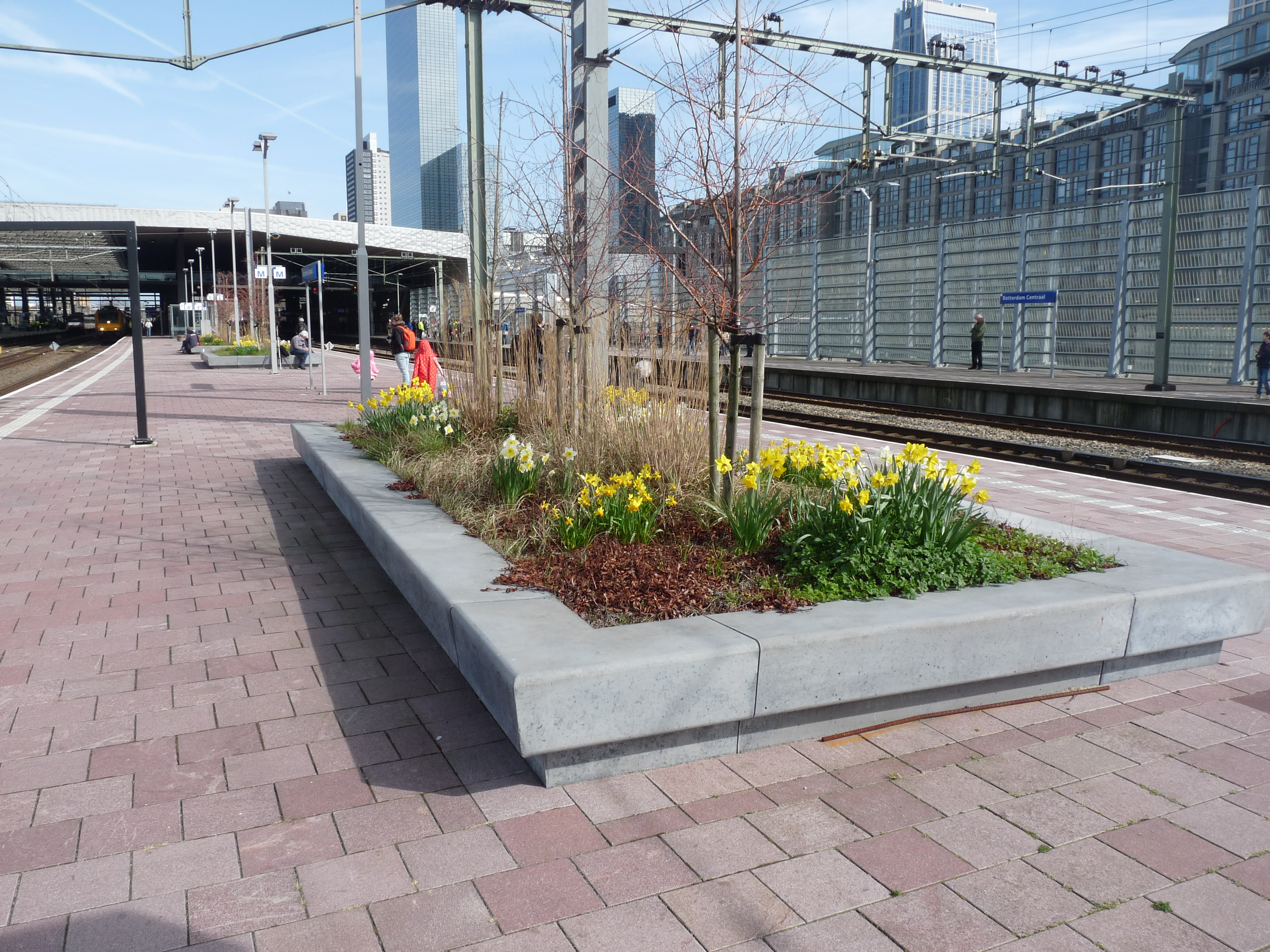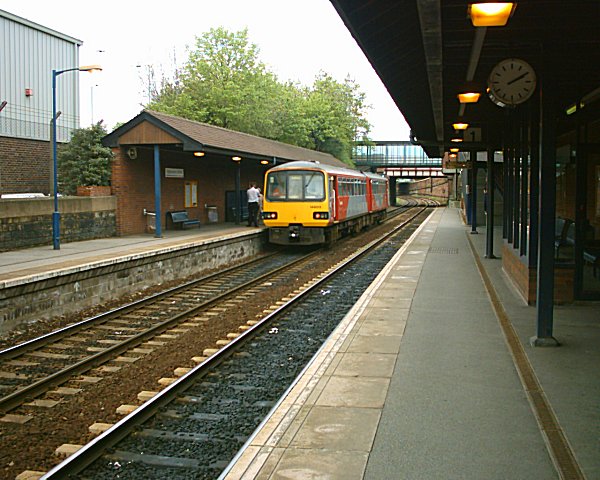|
Holmes Railway Station
Holmes railway station was a railway station in Rotherham, South Yorkshire, England. The station served the communities of Masbrough and Holmes and was situated on the former Sheffield and Rotherham Railway (S&R) line between Rotherham Westgate Station and Wincobank and Meadowhall Station. The station, which had two flanking platforms, opened with the line. With the building of the North Midland Railway through Rotherham Masborough, Holmes became the junction of the curve from this station to the Sheffield line. A second curve, allowing trains to travel from the Sheffield line to the North Midland facing south was opened in 1869.Pixton, B., (2000) ''North Midland: Portrait of a Famous Route,'' Cheltenham: Runpast Publishing The station was closed in 1955. Nowadays a footbridge spans the two tracks almost above Holmes Junction which, via a British Rail - built chord line, known as "The Holmes Chord", now links the former S&R line to the former Great Central Railway line throu ... [...More Info...] [...Related Items...] OR: [Wikipedia] [Google] [Baidu] |
Rotherham
Rotherham () is a large minster and market town in South Yorkshire, England. The town takes its name from the River Rother which then merges with the River Don. The River Don then flows through the town centre. It is the main settlement of the Metropolitan Borough of Rotherham. Rotherham is also the third largest settlement in South Yorkshire after Sheffield and Doncaster, which it is located between. Traditional industries included glass making and flour milling. Most around the time of the industrial revolution, it was also known as a coal mining town as well as a contributor to the steel industry. The town's historic county is Yorkshire. From 1889 until 1974, the County of York's ridings became counties in their own right, the West Riding of Yorkshire was the town's county while South Yorkshire is its current county. Rotherham had a population of 109,691 in the 2011 census. The borough, governed from the town, had a population of , the most populous district in En ... [...More Info...] [...Related Items...] OR: [Wikipedia] [Google] [Baidu] |
Railway Platform
A railway platform is an area alongside a railway track providing convenient access to trains. Almost all stations have some form of platform, with larger stations having multiple platforms. The world's longest station platform is at Hubbali Junction in India at .Gorakhpur gets world's largest railway platform ''The Times of India'' The in the United States, at the other extreme, has a platform which is only long enough for a single bench. Among some United States train conductors the word "platform" has entered [...More Info...] [...Related Items...] OR: [Wikipedia] [Google] [Baidu] |
Railway Stations In Great Britain Opened In 1838
Rail transport (also known as train transport) is a means of transport that transfers passengers and goods on wheeled vehicles running on rails, which are incorporated in tracks. In contrast to road transport, where the vehicles run on a prepared flat surface, rail vehicles (rolling stock) are directionally guided by the tracks on which they run. Tracks usually consist of steel rails, installed on sleepers (ties) set in ballast, on which the rolling stock, usually fitted with metal wheels, moves. Other variations are also possible, such as "slab track", in which the rails are fastened to a concrete foundation resting on a prepared subsurface. Rolling stock in a rail transport system generally encounters lower frictional resistance than rubber-tyred road vehicles, so passenger and freight cars (carriages and wagons) can be coupled into longer trains. The operation is carried out by a railway company, providing transport between train stations or freight customer facilit ... [...More Info...] [...Related Items...] OR: [Wikipedia] [Google] [Baidu] |
Locomotive
A locomotive or engine is a rail transport vehicle that provides the Power (physics), motive power for a train. If a locomotive is capable of carrying a payload, it is usually rather referred to as a multiple unit, Motor coach (rail), motor coach, railcar or power car; the use of these self-propelled vehicles is increasingly common for passenger trains, but rare for freight (see CargoSprinter). Traditionally, locomotives pulled trains from the front. However, Push-pull train, push-pull operation has become common, where the train may have a locomotive (or locomotives) at the front, at the rear, or at each end. Most recently railroads have begun adopting DPU or distributed power. The front may have one or two locomotives followed by a mid-train locomotive that is controlled remotely from the lead unit. __TOC__ Etymology The word ''locomotive'' originates from the Latin language, Latin 'from a place', Ablative case, ablative of 'place', and the Medieval Latin 'causing mot ... [...More Info...] [...Related Items...] OR: [Wikipedia] [Google] [Baidu] |
Dodds, Isaac And Son
Isaac Dodds and Son was a locomotive manufacturer based in the Holmes district of Rotherham, South Yorkshire, England. Isaac Dodds took over part of the works of Samuel Walker and Company in Rotherham sometime while he was Superintendent of the Sheffield and Rotherham Railway. It is likely, therefore, that he used it to maintain the company's locomotives, or even build new ones. There, however, seems to be no record. History Isaac Dodds was born on 9 July 1801 at Felling Hall, County Durham. His father Thomas was manager of the Felling Colliery and died when Isaac was four at the Hebburn Colliery. The local parish clerk, Willie Woolhave, contributed greatly to his schooling with Isaac showing aptitude for mathematics and drawing. About 1813 aged 12 Isaac was apprenticed as a mining engineer by his uncle Ralph Dodds and Killingworth Colliery. When George Stephenson joined Killingworth around 1815 and joint patented a Steam engine with Ralph it appears young Isaac built a model ... [...More Info...] [...Related Items...] OR: [Wikipedia] [Google] [Baidu] |
Scrapyard
A wrecking yard (Australian, New Zealand, and Canadian English), scrapyard (Irish, British British may refer to: Peoples, culture, and language * British people, nationals or natives of the United Kingdom, British Overseas Territories, and Crown Dependencies. ** Britishness, the British identity and common culture * British English, ... and New Zealand English) or junkyard (American English) is the location of a business in dismantling where wrecked or decommissioned vehicles are brought, their usable parts are sold for use in operating vehicles, while the unusable metal parts, known as scrap metal parts, are sold to metal-recycling companies. Other terms include wreck yard, wrecker's yard, salvage yard, breaker's yard, dismantler and scrapheap. In the United Kingdom, car salvage yards are known as car breakers, while motorcycle salvage yards are known as bike breakers. In Australia, they are often referred to as 'Wreckers'. Types of wreck yards The most common type of w ... [...More Info...] [...Related Items...] OR: [Wikipedia] [Google] [Baidu] |
Rotherham Central Railway Station
Rotherham Central railway station is in Rotherham, South Yorkshire, England. The station was originally named "Rotherham", becoming "Rotherham and Masborough" in January 1889 and finally "Rotherham Central" on 25 September 1950. The station has retained its "Central" suffix, despite being the only railway station in Rotherham since the closure of in 1988. History This is the fourth station to be built, within the town centre, on the line from . The first, a single platform terminus was built on what became the coal yard by the South Yorkshire Railway (SYR). Today this approximates to the land off Brinsworth Street below the bridge which carries the Inner Relief Road over the railway. The SYR could not gain permission to pass below the already built line of the Sheffield and Rotherham Railway, opened in 1838. A few years later and following amalgamation into the Manchester, Sheffield and Lincolnshire Railway (MS&LR), a scheme was developed to fill the South Yorkshire Navig ... [...More Info...] [...Related Items...] OR: [Wikipedia] [Google] [Baidu] |
Great Central Railway
The Great Central Railway in England was formed when the Manchester, Sheffield and Lincolnshire Railway changed its name in 1897, anticipating the opening in 1899 of its London Extension. On 1 January 1923, the company was grouped into the London and North Eastern Railway. History New name On assuming its new title, the Great Central Railway had a main line from Manchester London Road Station via , Sheffield Victoria, and Grimsby to . A second line left the line at Penistone and served , and Scunthorpe, before rejoining the Grimsby line at . Other lines linked Sheffield to Barnsley (via ) and Doncaster (via Rotherham) and also and Wrawby Junction. Branch lines in north Lincolnshire ran to Barton-upon-Humber and New Holland and served ironstone quarries in the Scunthorpe area. In the Manchester area, lines ran to Stalybridge and Glossop. In the 1890s, the MS&LR began constructing its Derbyshire lines, the first part of its push southwards. Leaving its east–west mai ... [...More Info...] [...Related Items...] OR: [Wikipedia] [Google] [Baidu] |
British Rail
British Railways (BR), which from 1965 traded as British Rail, was a state-owned company that operated most of the overground rail transport in Great Britain from 1948 to 1997. It was formed from the nationalisation of the Big Four British railway companies, and was privatised in stages between 1994 and 1997. Originally a trading brand of the Railway Executive of the British Transport Commission, it became an independent statutory corporation in January 1963, when it was formally renamed the British Railways Board. The period of nationalisation saw sweeping changes in the railway. A process of dieselisation and electrification took place, and by 1968 steam locomotives had been entirely replaced by diesel and electric traction, except for the Vale of Rheidol Railway (a narrow-gauge tourist line). Passengers replaced freight as the main source of business, and one-third of the network was closed by the Beeching cuts of the 1960s in an effort to reduce rail subsidies. On privatis ... [...More Info...] [...Related Items...] OR: [Wikipedia] [Google] [Baidu] |
Rotherham Masborough Railway Station
Rotherham Masborough railway station was the main railway station for Rotherham, South Yorkshire, England from the 1840s until 1987, when most trains were rerouted via Rotherham Central. It had four platforms, with a large sandstone station building on the eastern Platform Four, large iron and glass platform canopies, a fully enclosed footbridge and wooden waiting rooms on the other platforms. It closed in 1988, except for a few football specials. History The station, designed by Francis Thompson, was opened by the North Midland Railway between Derby and Leeds, and named simply 'Masbrough', without the 'o', since Rotherham had not yet grown to surround the village. The station was renamed 'Masbrough & Rotherham' in 1896, 'Rotherham Masborough' in 1908 (misspelt by the railway company: the name of the district has always been 'Masbrough'), then simply 'Rotherham' in 1969. The line was the first main link between Yorkshire and London, via Birmingham or Rugby. In time, it ... [...More Info...] [...Related Items...] OR: [Wikipedia] [Google] [Baidu] |
North Midland Railway
The North Midland Railway was a British railway company, which opened its line from Derby to Rotherham (Masbrough) and Leeds in 1840. At Derby, it connected with the Birmingham and Derby Junction Railway and the Midland Counties Railway at what became known as the Tri-Junct Station. In 1844, the three companies merged to form the Midland Railway. Origin The East Midlands had for some years been at the centre of plans to link the major cities throughout the country. In Yorkshire, George Hudson was the Chairman of the York and North Midland Railway, a proposed line from York towards the industrial markets of Manchester and Liverpool. The new line would connect it, and the Manchester and Leeds Railway as part of a trunk route from the South and London to Yorkshire and the North East of England. Meanwhile, financiers in Birmingham, were looking to expand their system northwards. George Carr Glyn was the first Chairman of the new company, with George Stephenson appointed as engi ... [...More Info...] [...Related Items...] OR: [Wikipedia] [Google] [Baidu] |






.jpg)
